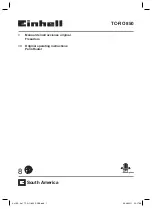
© Copyright IBM Corp. 2011
245
Chapter 21. Border Gateway Protocol
Border Gateway Protocol (BGP) is an Internet protocol that enables routers on an
IPv4 network to share and advertise routing information with each other about the
segments of the IPv4 address space they can access within their network and with
routers on external networks. BGP allows you to decide what is the “best” route for
a packet to take from your network to a destination on another network rather than
simply setting a default route from your border router(s) to your upstream
provider(s). BGP is defined in RFC 1771.
RackSwitch G8000es can advertise their IP interfaces and IPv4 addresses using
BGP and take BGP feeds from as many as 16 BGP router peers. This allows more
resilience and flexibility in balancing traffic from the Internet.
Note:
IBM Networking OS 6.8 does not support IPv6 for BGP.
The following topics are discussed in this section:
•
“Internal Routing Versus External Routing” on page 245
•
“Forming BGP Peer Routers” on page 246
•
“Loopback Interfaces” on page 247
•
“What is a Route Map?” on page 247
•
“Aggregating Routes” on page 251
•
“Redistributing Routes” on page 251
•
•
“Selecting Route Paths in BGP” on page 252
•
“BGP Failover Configuration” on page 253
•
“Default Redistribution and Route Aggregation Example” on page 254
Internal Routing Versus External Routing
To ensure effective processing of network traffic, every router on your network
needs to know how to send a packet (directly or indirectly) to any other
location/destination in your network. This is referred to as
internal routing
and can
be done with static routes or using active, internal dynamic routing protocols, such
as RIP, RIPv2, and OSPF.
Static routes must have a higher degree of precedence than dynamic routing
protocols. If the destination route is not in the route cache, the packets are
forwarded to the default gateway which may be incorrect if a dynamic routing
protocol is enabled.
It is also useful to tell routers outside your network (upstream providers or
peers
)
about the routes you can access in your network. External networks (those outside
your own) that are under the same administrative control are referred to as
autonomous systems
(AS). Sharing of routing information between autonomous
systems is known as
external routing
.
External BGP (eBGP) is used to exchange routes between different autonomous
systems whereas internal BGP (iBGP) is used to exchange routes within the same
autonomous system. An iBGP is a type of internal routing protocol you can use to do
active routing inside your network. It also carries AS path information, which is
important when you are an ISP or doing BGP transit.
Summary of Contents for RackSwitch G8000
Page 1: ...RackSwitch G8000 Application Guide...
Page 2: ......
Page 3: ...RackSwitch G8000 Application Guide...
Page 16: ...16 RackSwitch G8000 Application Guide...
Page 22: ...20 RackSwitch G8000 Application Guide...
Page 23: ...Copyright IBM Corp 2011 21 Part 1 Getting Started...
Page 24: ...22 RackSwitch G8000 Application Guide...
Page 54: ...52 RackSwitch G8000 Application Guide...
Page 55: ...Copyright IBM Corp 2011 53 Part 2 Securing the Switch...
Page 56: ...54 RackSwitch G8000 Application Guide...
Page 92: ...90 RackSwitch G8000 Application Guide...
Page 94: ...92 RackSwitch G8000 Application Guide...
Page 144: ...142 RackSwitch G8000 Application Guide...
Page 145: ...Copyright IBM Corp 2011 143 Part 4 Advanced Switch ing Features...
Page 146: ...144 RackSwitch G8000 Application Guide...
Page 148: ...146 RackSwitch G8000 Application Guide...
Page 182: ...180 RackSwitch G8000 Application Guide...
Page 184: ...182 RackSwitch G8000 Application Guide...
Page 212: ...210 RackSwitch G8000 Application Guide...
Page 258: ...256 RackSwitch G8000 Application Guide...
Page 286: ...284 RackSwitch G8000 Application Guide...
Page 294: ...292 RackSwitch G8000 Application Guide...
Page 298: ...296 RackSwitch G8000 Application Guide...
Page 310: ...308 RackSwitch G8000 Application Guide...
Page 311: ...Copyright IBM Corp 2011 309 Part 7 Network Management...
Page 312: ...310 RackSwitch G8000 Application Guide...
Page 320: ...318 RackSwitch G8000 Application Guide...
Page 332: ...330 RackSwitch G8000 Application Guide...
Page 334: ...332 RackSwitch G8000 Application Guide...
Page 345: ...Copyright IBM Corp 2011 343 Part 9 Appendices...
Page 346: ...344 RackSwitch G8000 Application Guide...
Page 357: ...Copyright IBM Corp 2011 Appendix C Notices 355 Taiwan Class A compliance statement...
















































